Disclosure: This article contains affiliate links. We may earn a commission from purchases at no extra cost to you, which helps our travel content.
Rome wasn't built in a day, and trust me, you won't see the real Rome in one either. Seven years ago, when I first brought my son Leo to the Eternal City, we did the standard tourist circuit—Colosseum, Vatican, throw a coin in Trevi Fountain, repeat. But something was missing. It wasn't until we got hopelessly lost in Trastevere and ended up sharing a meal with a local family that I realized—the Rome in guidebooks is just the establishing shot, not the full story. Since then, we've returned every spring, each time peeling back another layer of this magnificent city. Like any good animator knows, it's the subtle background details that bring a scene to life. So grab your walking shoes and appetite for adventure (and pasta, lots of pasta)—here are 10 local secrets that will transform your Roman holiday from a standard-definition tourist reel into a vibrant, high-resolution masterpiece.
1. The Secret Keyhole View That Frames Three Countries
On our third trip to Rome, Leo and I were wandering around the Aventine Hill when a friendly local noticed us looking at our (very obviously tourist) map. 'You want to see something magical?' he asked with a mischievous grin. He led us to an unassuming green door belonging to the Knights of Malta property.
'Look through the keyhole,' he instructed.
Leo went first. 'DAD! COME SEE THIS!'
I bent down and peered through—and what I saw was like something straight out of a perfectly composed animation cel: a tunnel of manicured hedges perfectly framing St. Peter's dome in the distance. What makes this view extraordinary is that you're simultaneously looking at three countries: you're standing in the sovereign territory of the Knights of Malta, looking through Italian territory, at Vatican City.
'This is like the perfect establishing shot,' I told Leo, who rolled his eyes at yet another one of my animation references.
The keyhole view at Piazza dei Cavalieri di Malta is surprisingly uncrowded most mornings. We arrived around 8:30 AM and had it almost to ourselves, except for a couple of locals walking their dogs who smiled knowingly as they passed the tourists huddled around a keyhole.
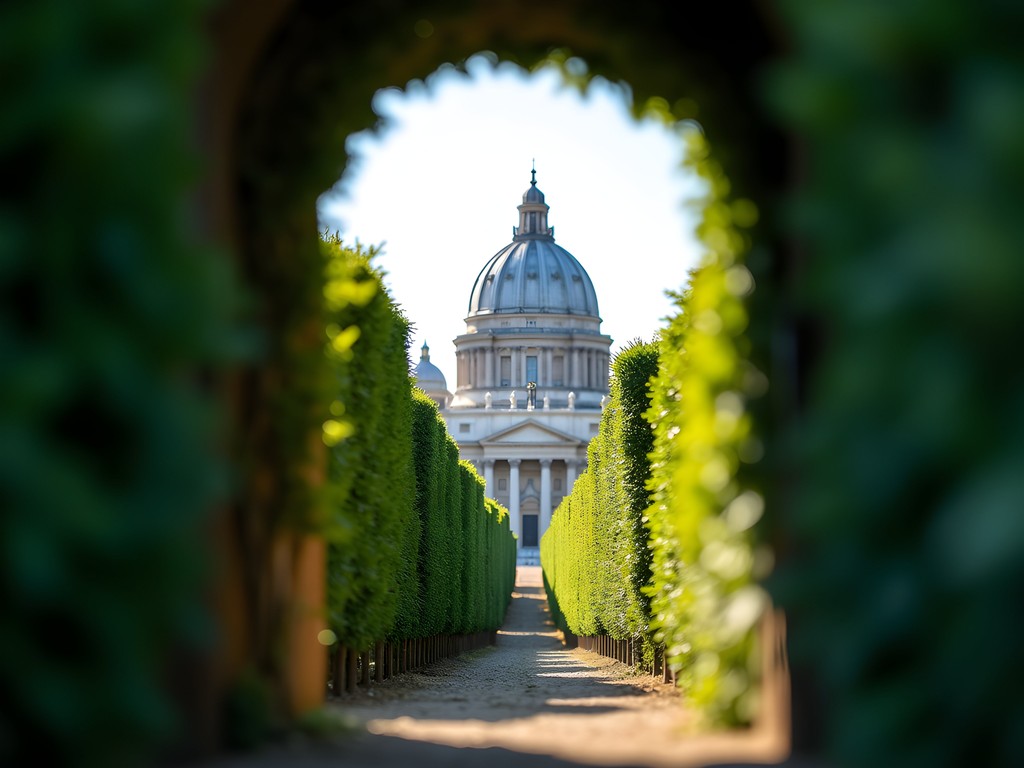
💡 Pro Tips
- Visit early morning (before 9 AM) or during lunch hours when tour groups are eating
- Bring a camera with good low-light capability as the keyhole view is quite dark
- Don't forget to explore the nearby Orange Garden (Giardino degli Aranci) for another spectacular view
2. Rome's Underground Layers: Beneath San Clemente Basilica
If Rome were an animation project, it would be the most complex multi-layered composition ever created. Nowhere is this more evident than at San Clemente Basilica, just a short walk from the Colosseum but missed by about 95% of tourists.
Leo and I discovered this place by accident when seeking shelter from a sudden spring shower. What looks like 'just another church' on the surface turned out to be a mind-blowing journey through time.
'Dad, it's like we're walking through different frames of history!' Leo exclaimed as we descended.
The current 12th-century basilica sits atop a 4th-century church, which itself was built over a 2nd-century pagan temple and a 1st-century Roman house. That's FOUR layers of history stacked like animation cels!
The most fascinating part? You can hear the ancient Roman water system still flowing through underground channels. Standing there in the dimly lit ancient chambers, listening to water that has been flowing since the time of emperors, gave me goosebumps.
I highly recommend bringing a good travel flashlight to better see the ancient frescoes and inscriptions in the lower levels. The staff provides some lighting, but having your own makes a huge difference in appreciating the details in the dimmer sections.
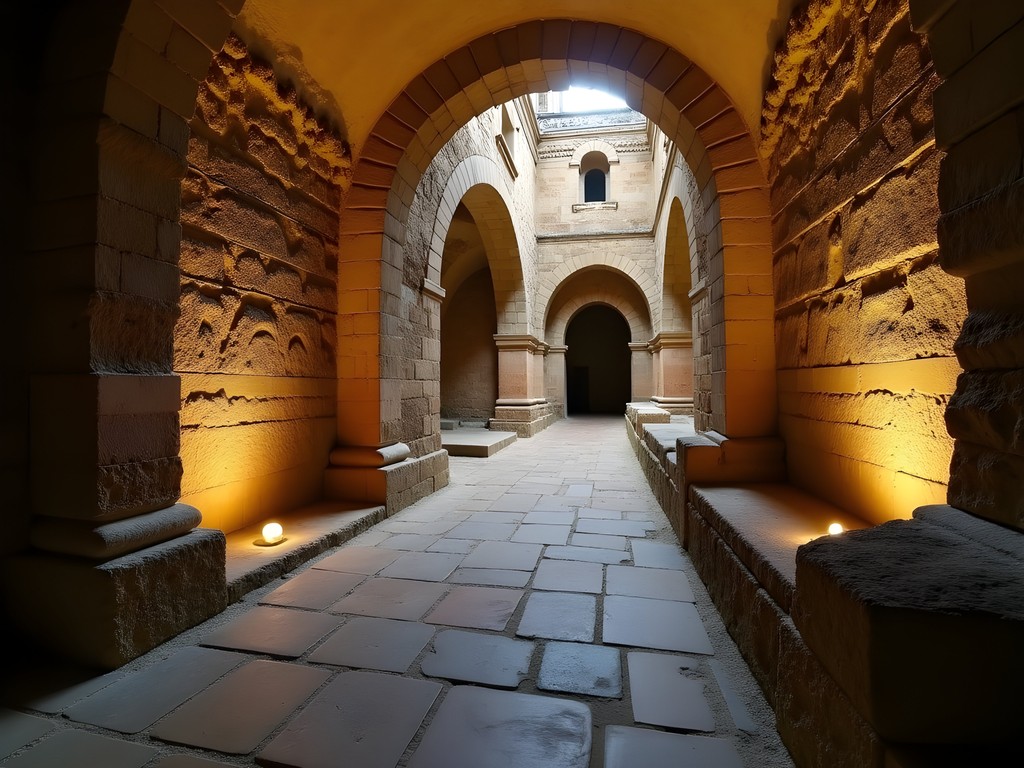
💡 Pro Tips
- Visit on weekdays for fewer crowds
- Start at the top level and work your way down chronologically
- Bring small euro coins for the lights in the lowest level
3. The Local's Aperitivo Scene in Pigneto
Forget the overpriced tourist bars near the Spanish Steps. If you want to experience aperitivo hour like a true Roman, head to Pigneto. This former working-class district has transformed into Rome's hipster haven, but it still maintains an authentic edge that hasn't been polished away for tourists.
Leo and I stumbled upon this neighborhood during our last trip when I was searching for street art to photograph. What started as an art expedition turned into a culinary adventure.
'This is where the animation studio folks would definitely hang out after work,' I told Leo as we settled into a cozy spot called Necci dal 1924, a historic café once frequented by famous Italian film director Pier Paolo Pasolini.
From 7-9 PM, most bars here offer aperitivo—Italy's glorious tradition where your drink comes with complimentary snacks or access to a small buffet. For the price of a €8-10 cocktail, you essentially get dinner included.
My go-to order is a classic Negroni, while Leo (now old enough) usually opts for a non-alcoholic alternative. The spread typically includes bruschetta, small pasta portions, cheeses, and various vegetable dishes.
'Dad, we should totally bring this concept back to Atlanta,' Leo suggested between bites of suppli (fried rice balls).
'Son, I've been saying that for years!'
What makes Pigneto special is the mix of locals—students, artists, young professionals—all mingling in a relaxed atmosphere. No one's rushing to take your table, no waiter is pushing the tourist menu, and the only English you'll hear is probably from other savvy travelers who've also escaped the centro storico bubble.
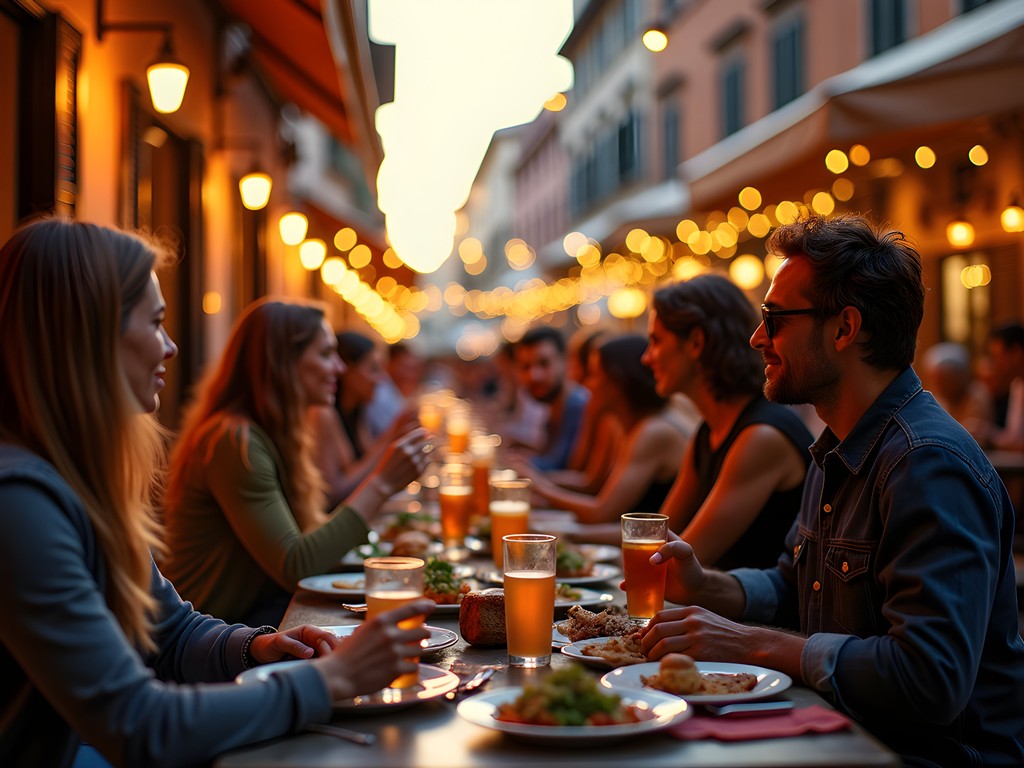
💡 Pro Tips
- Visit between 7-9 PM for the full aperitivo experience
- Try different places each night—each bar has its own aperitivo style and offerings
- Order a Negroni or an Aperol Spritz for the classic experience
4. The Hidden Stadium Inside Piazza Navona
As someone who's always on the lookout for hidden sports venues, this discovery blew my mind. Most tourists visit Piazza Navona to admire Bernini's fountains and enjoy the street performers, completely unaware they're standing in an ancient stadium.
Piazza Navona was built over the 1st-century Stadium of Domitian, and its distinctive oval shape perfectly preserves the footprint of this 30,000-seat venue where ancient Romans watched athletic competitions.
'Leo, this is like finding the original storyboard underneath the final animation,' I explained, probably using one too many animation metaphors as usual.
But the real secret? Most visitors never discover that you can actually go underground and see the original stadium remains. The entrance is easy to miss—a small doorway at Piazza di Tor Sanguigna 13, just off the northern end of Piazza Navona.
Descending below street level reveals ancient walls, seating areas, and artifacts from the stadium where Romans once cheered their favorite athletes nearly 2,000 years ago. The museum is small but fascinating, with excellent multimedia presentations showing how the stadium looked in its heyday.
'So this is basically ancient Rome's Madison Square Garden?' Leo asked.
'More like their Olympic stadium for track and field,' I corrected him.
When exploring underground sites like this, I always bring my travel power bank to keep my phone charged for photos and audio guides. Many of Rome's underground sites have poor reception, so having offline maps and guides downloaded is essential, and nothing drains a battery faster than taking photos in low light conditions.
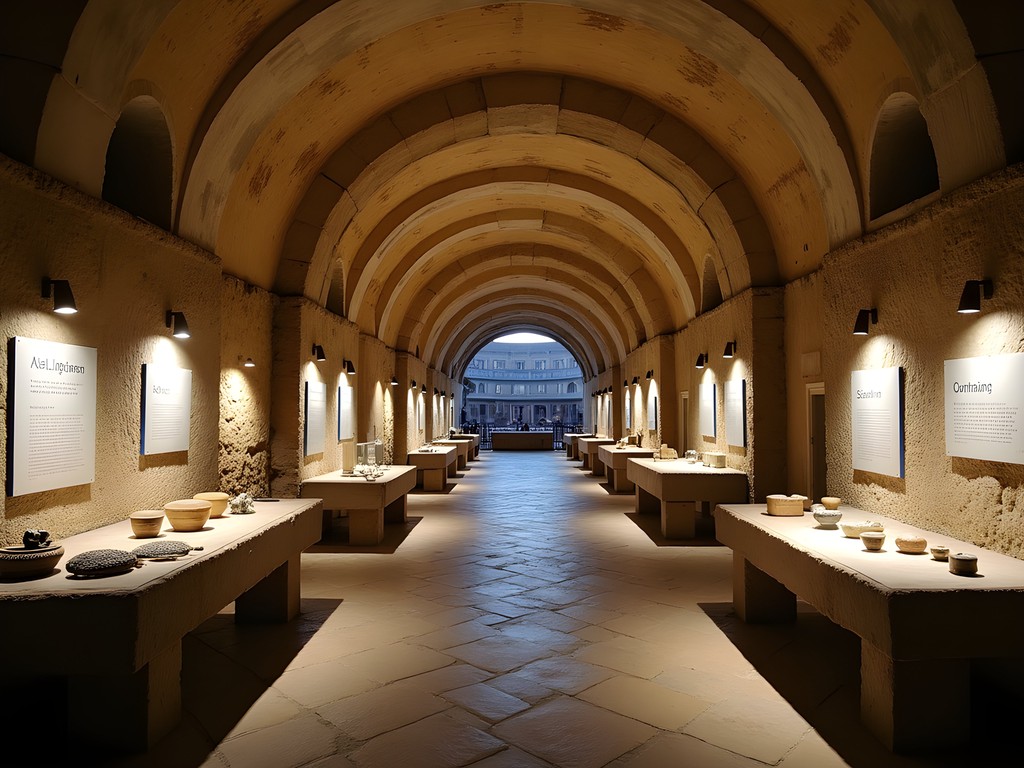
💡 Pro Tips
- Look for the entrance at Piazza di Tor Sanguigna 13
- Visit in the afternoon when Piazza Navona is crowded—the underground site rarely has lines
- Download the free audio guide before your visit for better context
5. The Locals' Pasta Paradise in Testaccio
If there's one neighborhood in Rome where you should come hungry, it's Testaccio. This unassuming district was Rome's slaughterhouse area for centuries, which might not sound appetizing, but trust me—it developed some of the city's most authentic cuisine as a result.
On our second-to-last day in Rome, Leo and I took a food tour with a local guide named Marco. When I asked him where he eats when not working, he didn't hesitate: 'Flavio al Velavevodetto in Testaccio, no question.'
Built literally into Monte Testaccio (an ancient Roman trash heap made of discarded amphorae), this restaurant serves what many Romans consider the perfect cacio e pepe—that seemingly simple but notoriously difficult-to-master cheese and pepper pasta.
'Dad, this is like when we get that perfect frame of animation after a hundred tries,' Leo said, twirling his pasta with reverence. The kid gets it.
What makes Testaccio special is that it's where you'll find Rome's famous 'quinto quarto' cuisine—dishes made from the 'fifth quarter' or offal that slaughterhouse workers received as part payment. Don't wrinkle your nose! Dishes like coda alla vaccinara (oxtail stew) are rich, flavorful masterpieces.
For the less adventurous, the pasta classics here—amatriciana, carbonara, gricia—are served in their most authentic form. No cream in carbonara, ever!
After lunch, walk it off at the fascinating Testaccio Market, where locals shop for everything from fresh produce to household items. The market also houses some excellent street food stalls where you can sample supplì (fried rice balls) and other Roman snacks.
For serious food lovers, I recommend bringing a food journal to record your culinary discoveries. Mine is filled with notes about pasta techniques, flavor combinations, and addresses of hidden gems that I've tried to recreate at home (with varying degrees of success).

💡 Pro Tips
- Make reservations at popular restaurants like Flavio al Velavevodetto
- Visit Testaccio Market in the morning when it's most active (closed Sundays)
- Order Roman pasta classics: cacio e pepe, amatriciana, carbonara, or gricia
6. The Appian Way Without Crowds
The Appian Way (Via Appia Antica) is one of the oldest and most important roads in Western civilization, but most tourists only see a small, often crowded section of it. Leo and I discovered the secret to experiencing this ancient highway in peace: timing and transportation.
Renting bikes transformed our experience completely. While tour groups cluster near the catacombs entrance, we pedaled further down the ancient cobblestones to sections where we had the 2,300-year-old road entirely to ourselves.
'It's like we've time-traveled,' Leo whispered as we stopped to examine the original Roman paving stones, worn with chariot ruts. 'I can almost hear the legions marching.'
The key is to visit on Sundays when the road is closed to cars, creating a peaceful, almost magical atmosphere. We rented our bikes from a small shop near the Appia Antica Park entrance and spent hours exploring ancient tombs, fragments of Roman villas, and miles of countryside that looks remarkably unchanged since antiquity.
One of our favorite discoveries was the Villa of the Quintilii, a massive ancient estate with thermal baths and its own private amphitheater. It was so impressive that Emperor Commodus (yes, the villain from Gladiator) had the owners executed so he could take it for himself!
For this kind of day trip, I always bring my packable daypack which folds into itself when not needed but expands to hold water bottles, snacks, and layers as you explore. The Appian Way has limited facilities once you get beyond the first mile, so coming prepared is essential.
The best part? This incredible archaeological park is free to explore, with only specific sites like the catacombs requiring entrance fees. It's Rome as it should be experienced—historically profound, visually stunning, and blissfully peaceful.

💡 Pro Tips
- Visit on Sundays when the road is closed to vehicle traffic
- Rent bikes near the park entrance rather than bringing them from central Rome
- Bring water and snacks—facilities are limited beyond the first section
7. The Mural Heaven of Quadraro
As someone who's always drawn to urban art, discovering Rome's street art scene was like finding an unexpected post-credits scene in my favorite film. While most visitors associate Rome with Renaissance masterpieces and ancient sculptures, the city has a vibrant contemporary art scene—you just need to know where to look.
Quadraro, a residential neighborhood in southeastern Rome, has transformed itself into an open-air museum through the M.U.Ro project (Museo di Urban Art di Roma). This initiative has invited artists from around the world to create large-scale murals throughout the district.
Leo and I spent a full morning wandering through the neighborhood, discovering massive works hidden around corners and tucked between apartment buildings.
'This reminds me of your storyboard wall at the studio,' Leo observed as we admired a particularly colorful piece spanning an entire building façade.
'Except these artists don't have to worry about executives asking them to change everything,' I laughed.
What makes Quadraro special is not just the quality of the art but the neighborhood's fascinating history. During WWII, it was known as the 'Wasp's Nest' for its fierce resistance to Nazi occupation. Many murals reference this history, creating a powerful dialogue between past and present.
Unlike the tourist-packed galleries of central Rome, here we shared the streets only with locals going about their daily business, many of whom proudly pointed out their favorite pieces or explained the stories behind them.
For serious photography enthusiasts, I recommend bringing a wide angle lens to capture these massive murals in their entirety. Many works span entire buildings, and a standard lens simply can't capture their scale and impact.
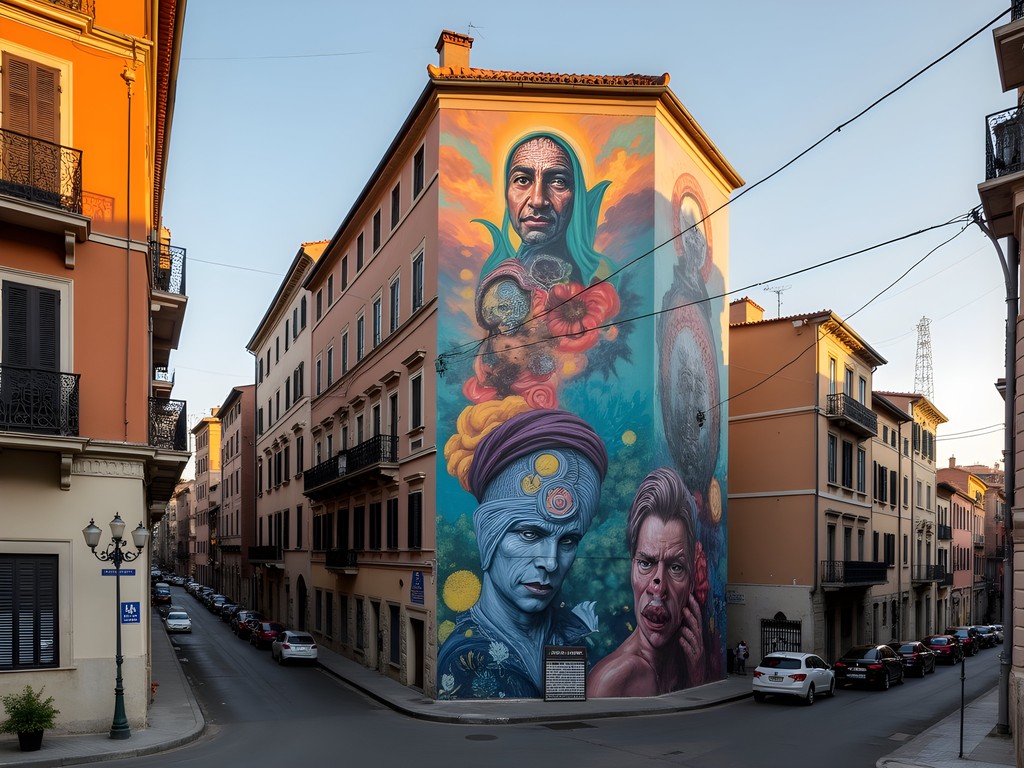
💡 Pro Tips
- Take Metro Line A to Porta Furba-Quadraro and explore on foot
- Download the M.U.Ro project map before visiting to find all major works
- Visit on weekday mornings when lighting is good and streets are quiet
8. The Secret Rooftop Garden of the Knights of Malta
Remember that keyhole view I mentioned earlier? Well, there's more to the Knights of Malta property than just peeking through a keyhole. What most visitors don't realize is that the Villa Malta (Magistral Villa) occasionally opens its magnificent gardens to the public—you just need to plan ahead.
The Sovereign Military Order of Malta, a 900-year-old Catholic religious order, maintains this property as its embassy to Italy. Several times a month, they offer limited guided tours of the villa gardens, which offer some of the most spectacular views of Rome you'll ever see.
'Dad, this is like when we get access to the VIP area at Comic-Con,' Leo whispered as we followed our guide through the immaculate grounds.
'Except with a much better view and fewer people in Stormtrooper costumes,' I replied.
The garden itself is a masterpiece of landscape design, with meticulously maintained Mediterranean plants, classical statuary, and those picture-perfect views of St. Peter's dome that you glimpsed through the keyhole. But now you get the full panoramic experience.
What makes this experience special is its exclusivity—each tour is limited to small groups, and you'll need to email the Order's communications office well in advance to secure a spot (usually at least a month ahead). The tours are free, though donations are appreciated.
While visiting these gardens, our guide shared fascinating stories about the Knights of Malta—the world's only sovereign entity without actual territory. They issue their own passports, stamps, and license plates, and maintain diplomatic relations with over 100 countries despite not having a country of their own.
'It's like being in a country that's not a country, inside another country, looking at a third country,' Leo observed, perfectly capturing the unique geopolitical curiosity of this place.
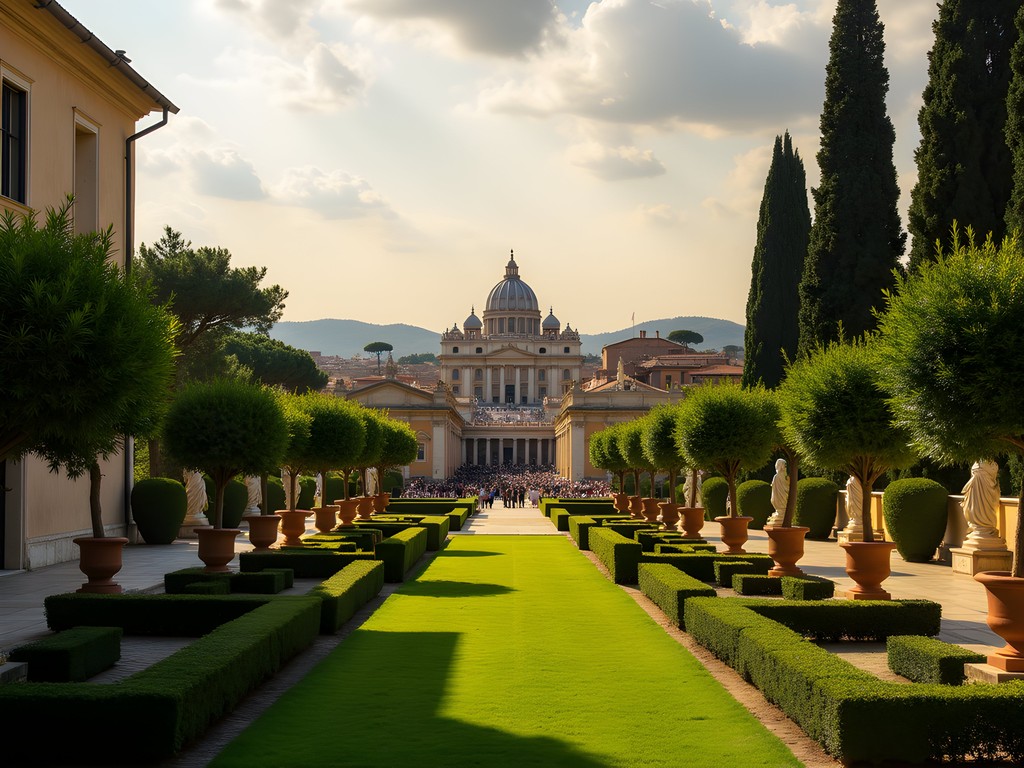
💡 Pro Tips
- Email the Order's communications office 4-6 weeks before your trip to request a tour spot
- Bring ID as security is strict (it's technically an embassy)
- Visit on clear days for the best views of St. Peter's
9. The Pasta-Making Class with Nonna
You haven't truly experienced Rome until you've made pasta alongside an Italian grandmother. After years of visiting Rome, one of our most cherished memories came from a small apartment in Monteverde, where we learned to make pasta from scratch with 78-year-old Nonna Giuliana.
Leo and I discovered this experience through a friend of a friend—it's not something you'll find on major booking sites. Nonna Giuliana has been making pasta since she was a child, and now invites small groups into her home to share her techniques.
'Animation is about patience and precision,' I told Leo as we struggled to get our pasta dough to the right consistency. 'So is pasta-making, apparently.'
'Yeah, but you can't eat a messed-up animation frame,' Leo replied as he sampled a piece of raw dough, earning a gentle slap on the hand from Nonna.
'Non ancora!' (Not yet!) she scolded with a smile.
Over the course of three hours, we learned to make three types of pasta: fettuccine, ravioli, and Nonna's specialty—tonnarelli cacio e pepe. The class was conducted in a mix of broken English, enthusiastic Italian, and universal hand gestures.
The best part came at the end when we sat down to enjoy our creations alongside Nonna's family, complete with local wine and stories about how Rome has changed over her lifetime. Her grandson Marco translated the best parts, including some colorful opinions about modern pasta shortcuts that I probably shouldn't repeat here!
For home cooks inspired by Italian cuisine, I've found that a good pasta maker is worth the investment. While nothing compares to learning from a true Italian nonna, having the right tools helps recreate a small taste of Rome at home.

💡 Pro Tips
- Look for cooking classes in residential neighborhoods rather than tourist areas
- Ask your accommodation host for recommendations of local cooking experiences
- Bring a small gift for your cooking instructor—a token from your home country is always appreciated
10. The Locals' Swimming Spot at Laghetto dell'EUR
Rome in spring can get surprisingly warm, and when temperatures rise, follow the locals to a hidden urban oasis—the artificial lake in the EUR district known as Laghetto dell'EUR.
EUR itself is worth visiting as one of Rome's most unusual neighborhoods. Built during Mussolini's era as a showcase for fascist architecture, it's now a business district with wide boulevards, white marble buildings, and a distinctly different feel from historic Rome.
Leo and I discovered the lake on a particularly hot May afternoon during our last trip. We had just finished visiting the fascinating Museum of Roman Civilization nearby when we noticed locals heading toward the water with picnic baskets and towels.
'Should we follow them?' Leo asked.
'When in Rome...' I replied with the dad joke I'd been saving all trip.
The lake area has been beautifully developed with walking paths, rowing clubs, and several excellent cafes along the shore. On weekends, Roman families flock here to escape the city center heat without having to travel all the way to the coast.
While swimming isn't permitted in the lake itself, there's a wonderful public swimming pool complex called Piscina delle Rose right beside it, where you can swim outdoors with views of EUR's striking architecture. For around €10-15, you can spend a half-day swimming and sunbathing alongside locals.
'This is like finding the perfect background plate for an animation scene,' I commented as we relaxed by the pool. 'Something unexpected that makes everything else work better.'
'Dad, not everything is like animation,' Leo sighed.
'That's where you're wrong, kiddo,' I laughed.
After swimming, don't miss the chance to try water sports on the lake—rowboat and paddleboat rentals are affordable and offer a unique perspective of EUR's monumental architecture reflected in the water. It's a side of Rome that even many longtime visitors never experience.

💡 Pro Tips
- Take Metro Line B to EUR Palasport station
- Visit on weekend afternoons to see the area at its most lively
- Bring swimming gear in spring/summer to use the adjacent Piscina delle Rose pool
Final Thoughts
Rome reveals itself in layers, just like a well-crafted animation. The tourist Rome—the Colosseum, the Vatican, the Spanish Steps—that's just the key frame. But the real magic happens in the in-between frames, those moments and places that bring the city to life in vibrant, unexpected ways. Leo and I have returned to Rome year after year, each time discovering something new that makes us fall in love with the Eternal City all over again. These ten secrets have transformed our Roman adventures from typical tourist experiences into something deeper and more meaningful. Whether you're stealing a peek through the Knights of Malta keyhole, making pasta with a nonna who's been perfecting her craft for seven decades, or biking along the ancient Appian Way on a quiet Sunday morning, these experiences connect you to the authentic pulse of Rome. So on your next visit, by all means, toss that coin in the Trevi Fountain—but then, head off the beaten path. The real Rome is waiting for you, just around the corner from where the tour buses stop.
✨ Key Takeaways
- The most authentic Roman experiences happen away from major tourist attractions
- Timing is everything—early mornings and Sundays offer peaceful experiences at otherwise busy sites
- Food experiences with locals provide deeper cultural understanding than any guidebook
- Rome's lesser-known neighborhoods like Testaccio, Pigneto, and Quadraro offer authentic glimpses into local life
- Some of Rome's best secrets are hidden in plain sight or literally beneath your feet
📋 Practical Information
Best Time to Visit
April-May or September-October
Budget Estimate
€100-150 per day excluding accommodation
Recommended Duration
At least 7 days to include hidden gems
Difficulty Level
Easy To Moderate (Involves Significant Walking)

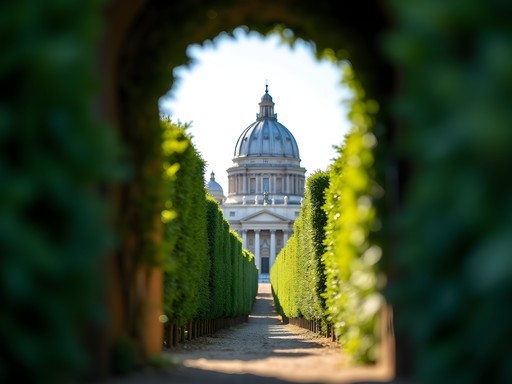
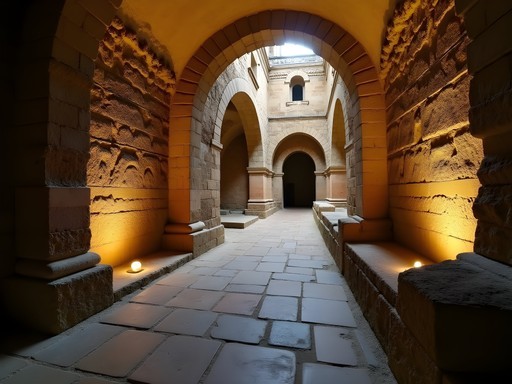
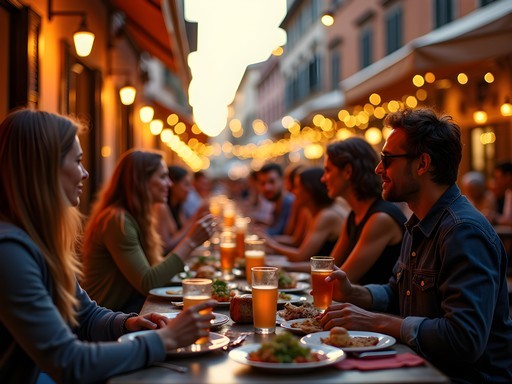
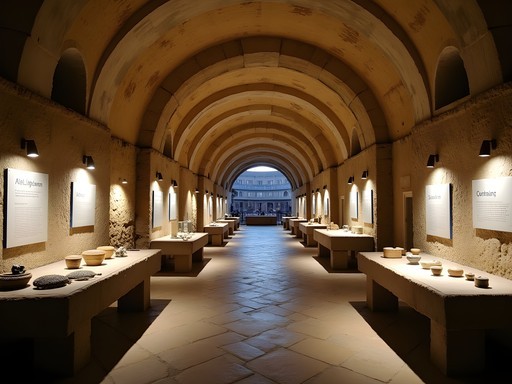

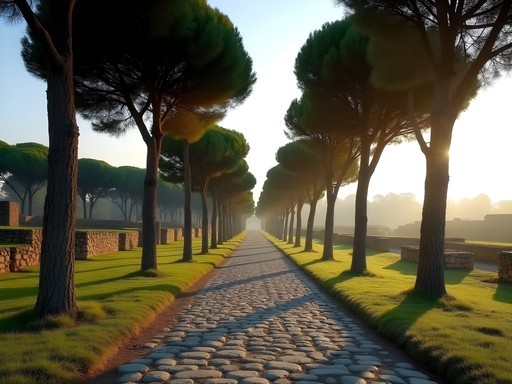


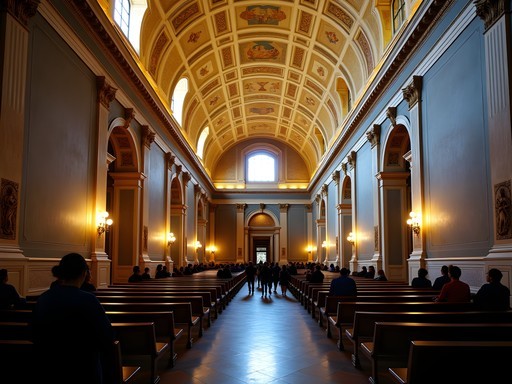
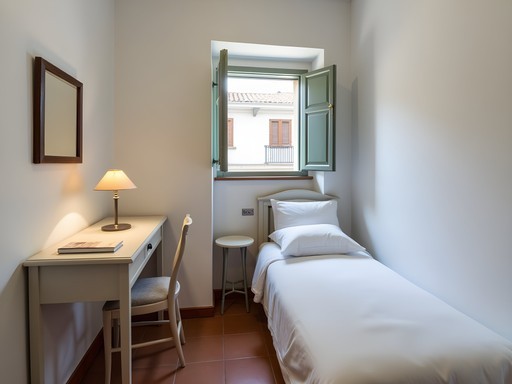
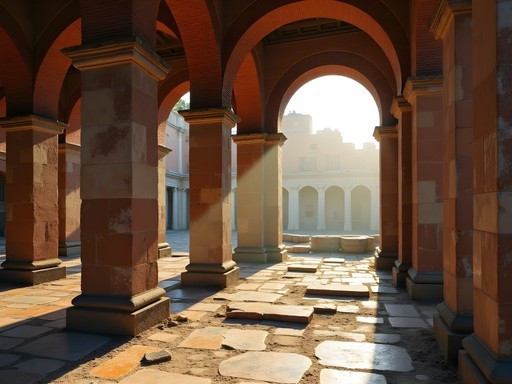

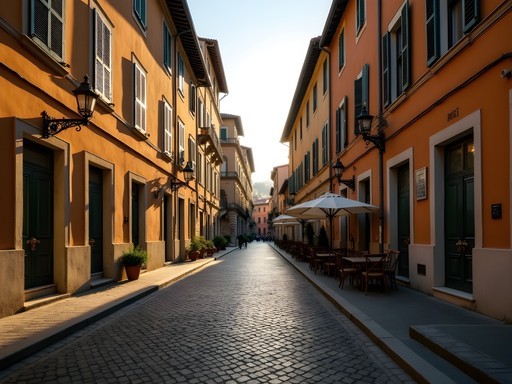


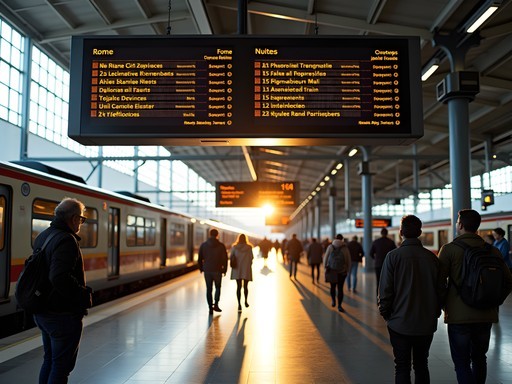
Comments
TravelingTeacher
Just got back from Rome and used this guide extensively - thank you! The keyhole view was magical at sunset. We also found that having a good map of the underground metro system was essential since some stations were closed for renovation. I used the pocket guide which had all the metro info plus walking tours that connected many of these hidden spots. The Pigneto aperitivo scene was exactly as described - so much more authentic than the touristy spots near Spanish Steps!
coffeediver
Which place in Pigneto did you like best? Planning to hit that neighborhood next week!
TravelingTeacher
Necci dal 1924 was our favorite! Great negronis and the small plates were amazing. Super local vibe.
wanderlust_jane
We did the public transportation in Rome like you suggested and saved so much money! Those metro passes were clutch.
ItalyDreamer
Going to Rome with kids (8 and 11) next month. Would San Clemente be interesting for them or too boring?
Ethan Parker
My son Leo was 10 when we visited and he loved it! The underground layers felt like an archaeological adventure to him. Just prepare them with stories about ancient Rome beforehand so they understand what they're seeing.
Taylor Moreau
Excellent compilation of Rome's hidden treasures, Ethan. I particularly appreciate your insights on San Clemente Basilica - the layered history there is truly remarkable. During my business trips to Rome, I always make time to visit these less crowded spots. I found that visiting San Clemente early on weekday mornings (around 9am) provides the most contemplative experience. The underground sections reveal Rome's palimpsest nature better than any textbook could. I'd add that bringing a small torch can enhance the experience in some of the dimmer sections. Your Pigneto recommendations are spot on - I've had some of my most memorable client dinners in that neighborhood.
RomeAdventurer92
Is Pigneto safe at night? Planning to check it out next month.
Taylor Moreau
Absolutely. It's lively and well-populated in the evening, especially around the main restaurant streets. Just use normal urban awareness as you would anywhere.
coffeediver
That keyhole view blew my mind when I found it last year! Almost walked right past it.
Ethan Parker
That's exactly why I had to include it! So many people miss it completely.
coffeediver
Took me three trips to Rome to finally find it! Worth the hunt though.
wanderlustqueen
Love these ideas but I only have 3 days in Rome. Should I skip the tourist spots completely and just do these hidden gems? First timer here!
freeperson
Don't skip the classics on your first visit! Maybe do Colosseum + Forum one day, Vatican another, then use your third day for these hidden spots.
Stephanie Romano
I agree with @freeperson! For a first-timer, see the iconic sites but add 1-2 of these hidden gems to balance things out. The Keyhole view takes 15 minutes max and is close to the Circus Maximus area. Perfect combo of famous + secret Rome!
photoperson
Has anyone found that rooftop bar near Campo de' Fiori that Ethan mentioned? Can't seem to find the exact name in the article.
Nicole Russell
I think he's talking about La Terrazza dei Papi! You need to book ahead, especially for sunset. The spritz there is pricey but the view makes it worth every euro!
sunnybuddy
Just got back from Rome and used this guide as our blueprint! The secret keyhole view was magical - my kids were absolutely stunned that they could see three countries at once. And you were so right about Piazza Navona having a hidden stadium underneath! We walked around trying to trace the oval shape and imagine the chariot races. Best tip was skipping the tourist trap restaurants. We found this tiny family place in Trastevere where the nonna still makes the pasta by hand every morning. Pure magic!
winternomad
Care to share the name of that restaurant? Heading there in December!
sunnybuddy
It's called Da Enzo al 29. Small place, no reservations, but worth the wait. Get the cacio e pepe and thank me later!
Douglas Bradley
Ethan, this is exactly the kind of nuanced take on Rome that travelers need. I've been studying Roman history for years and still discovered new perspectives through your post. The hidden stadium inside Piazza Navona is particularly fascinating because it demonstrates how Rome continuously repurposes its ancient structures rather than simply preserving them as museum pieces. I'd add one suggestion to your list: the Centrale Montemartini museum, where classical Roman statues are displayed in an early 20th century power plant. The juxtaposition of ancient marble against industrial machinery creates a dialogue between Rome's various historical layers that perfectly illustrates your point about the city revealing itself gradually. Excellent work highlighting how understanding context transforms a simple sightseeing trip into a meaningful cultural experience.
photomood
Just got back from Rome and tried the hidden stadium inside Piazza Navona tip! So cool seeing the ancient track outline when you know what to look for. We had coffee at that little corner place you mentioned and the barista explained the whole history to us. Made our day!
journeychamp
Did you try the gelato place nearby? The pistachio is unreal!
photomood
Yes! I think we hit every gelato place in a 5km radius lol. The one with the blue sign had the best stracciatella I've ever tasted!
Venture X
Premium card with 2X miles, $300 travel credit, Priority Pass